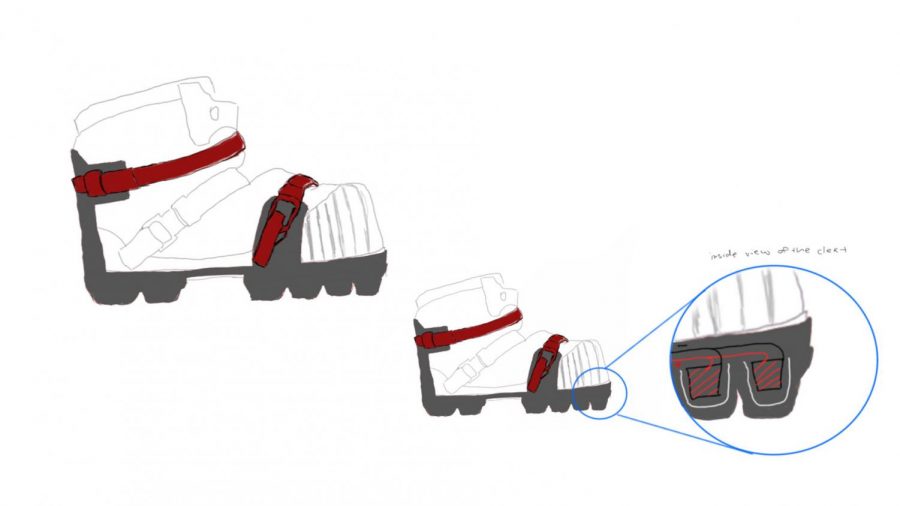NIU students submit prototype design for NASA competition
Courtesy of NIU NASA
The Boot Cleat created by the NIU NASA Team for NASA’s 2021 Big Idea Challenge. The design is aimed to increase spacesuit dust-tolerance and mitigation.
January 20, 2021
DeKALB – NIU’s NASA Team submitted a prototype design for NASA’s 2021 Big Idea Challenge. The prototype is a cleat attachment designed for use by astronauts traversing the surface of the moon on foot.
Held annually since 2016, the Big Idea Challenge complements NASA’s Project Artemis, which seeks to land humans on the surface of the Moon by 2024. The competition is run by the National Institute of Aerospace, a non-profit research and graduate education institute. It’s a strategic partner of the NASA Langley Research Center, according to the Institute’s website.
Conceived and created by a team of 20 students, the goal of the prototype design is to increase spacesuit dust-tolerance and mitigation, which is also the theme of this year’s competition, according to a YouTube video published by the NIU NASA Team.
The Boot Cleat’s specialized design resembles an athletic cleat and includes electromagnetic fibers within the body of the cleat that will repel lunar dust from the suit, said Kevin Lewis, team member and mechatronics engineering student.
“During the Apollo mission, after long periods of time exploring the lunar surface, astronauts would lose traction at the bottom of the boot sole due to lunar particles constantly building up in small areas of the boot,” team-lead Di’Quan Ishmon said. “There will be an electrical charge sent in the small areas of the cleat that will help repel the lunar dust particles.”
The team spent the fall semester creating their prototype concept and design. The team submitted the design concept in December and now waits to learn whether their submission has been selected for further development by nine Big Idea Challenge judges, Ishmon said.
Teams are notified by the end of January, according to challenge guidelines. If the proposal is accepted and reviewed by NASA, funds would be released to match the proposed budget up to nearly $200,000 for the team to continue to implement the research and create a physical prototype, said Kaylen Platt, team-lead and mechanical engineering student.
“If we’re chosen, from here on out, it would be crazy-busy,” Platt said. “We’d have to secure a physical location for a workshop so that at least some of us could go in and start construction of the prototype.”
Usually, less than two dozen teams are selected as finalists from universities all across the nation, according to the challenge’s website. If chosen, NIU’s team receives the funding to create their prototype, and moves to the next phase of the challenge over the 2021 spring and summer semesters, according to the challenge website.
This is NIU’s second year participating.
Platt, who participated in the 2020 Big Idea Challenge as well, said the effects of the COVID-19 pandemic did not negatively affect the team’s efforts much, but they still would have preferred working face-to-face.
“We knew that we were going to do this again [this year], so when the pandemic rolled around we at least had from March until this summer to really get used to an online environment and plan for that,” Platt said. “There were a few of us who weren’t even coming back to campus in the fall. Some of our professors weren’t even on campus, so in the [early] meetings over the summer we decided everything would have to be virtual.”







